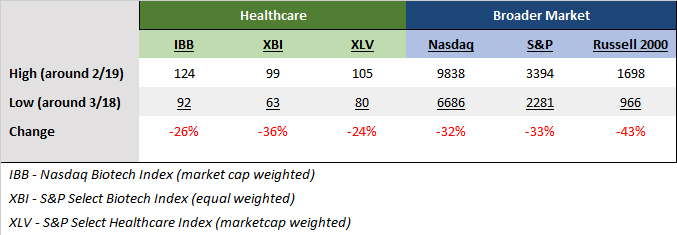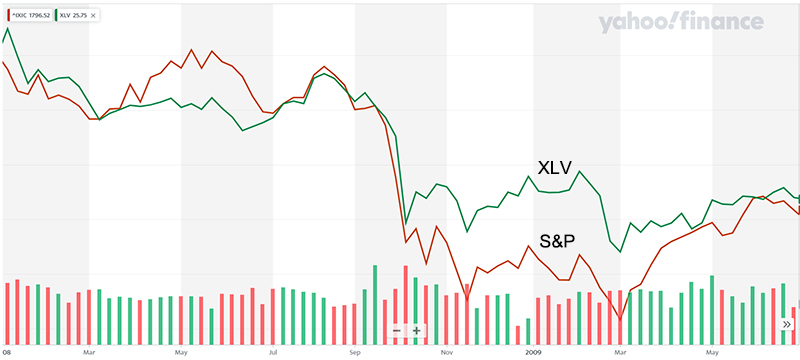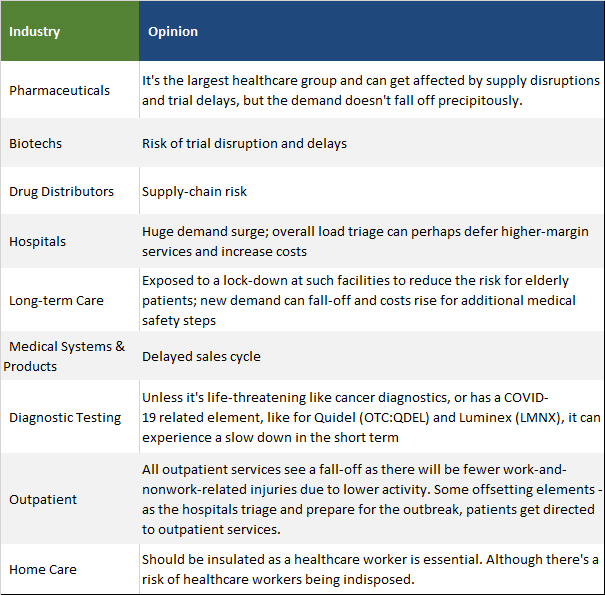As the stock market ponders over the strength and longevity of economic growth, Healthcare is uniquely positioned. Being a defensive sector, healthcare has become more attractive as concerns about a potential economic slowdown flare up periodically. Fundamentally, healthcare also has significant new spending momentum, which makes it suitable both as growth and defensive investment.
In much of the first half, healthcare lagged the broader market meaningfully. However, since June, the healthcare sector has climbed steadily to become the leading sector in the market, even avoiding much of the volatility triggered by worries about economic growth. After a lagging start, the S&P Healthcare Index (XLV) has recorded a gain of 19% for the year, and caught up with the Nasdaq Composite Index, while only slightly behind the 20% gain of the S&P 500. The Prudent Healthcare portfolio is up 97% over the same period.
This is a brief second-half update to the January outlook article, Healthcare Is Ready To Lead In 2021, in which we wanted to highlight the spending momentum in the sector and revisit the return projection. Healthcare is not yet done in its gains for the year
Spending Momentum In A Defensive Sector
The investing argument for healthcare is clear. As per the Centers for Medicare & Medicaid Services (CMS), healthcare spending in the US is projected to be over $4 trillion in 2021, almost one-fifth of GDP. It will grow by another trillion dollars over the next 5 years. This is significant new spending momentum. There is also a bill being proposed in Congress that will expand healthcare access, lower the Medicare age, and expand the healthcare services available under Medicare for the rapidly aging US population. If passed, it will further boost new healthcare spending. PwC's Health Research Institute (HRI) is estimating ex-COVID spending to rise by 7% this year and 6.5% next year.
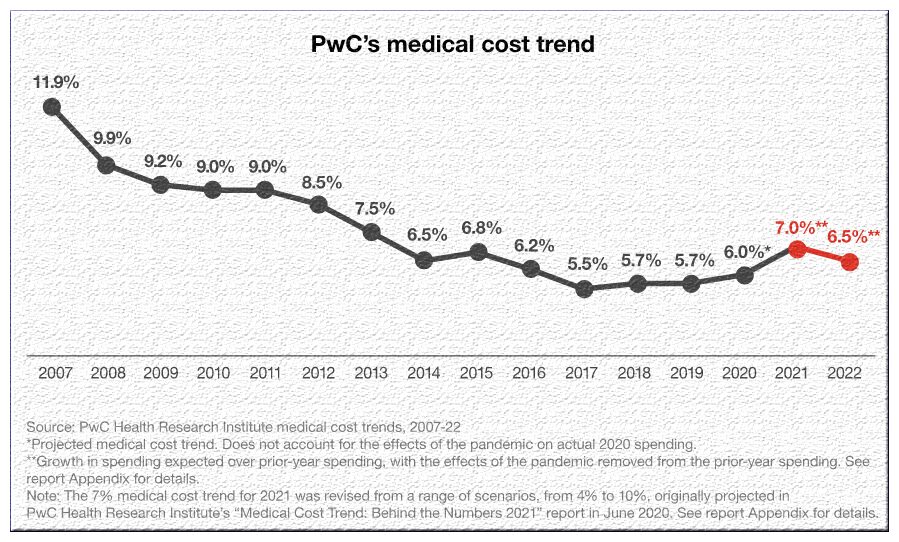
There is significant pent-up demand for healthcare services that have been deferred due to the pandemic. Employer share of healthcare spending was lower than expected in 2020, and the rebound was halted due to the resurgence of the Delta variant. Hospital utilization, the largest segment of healthcare spending, remains at below-average levels.
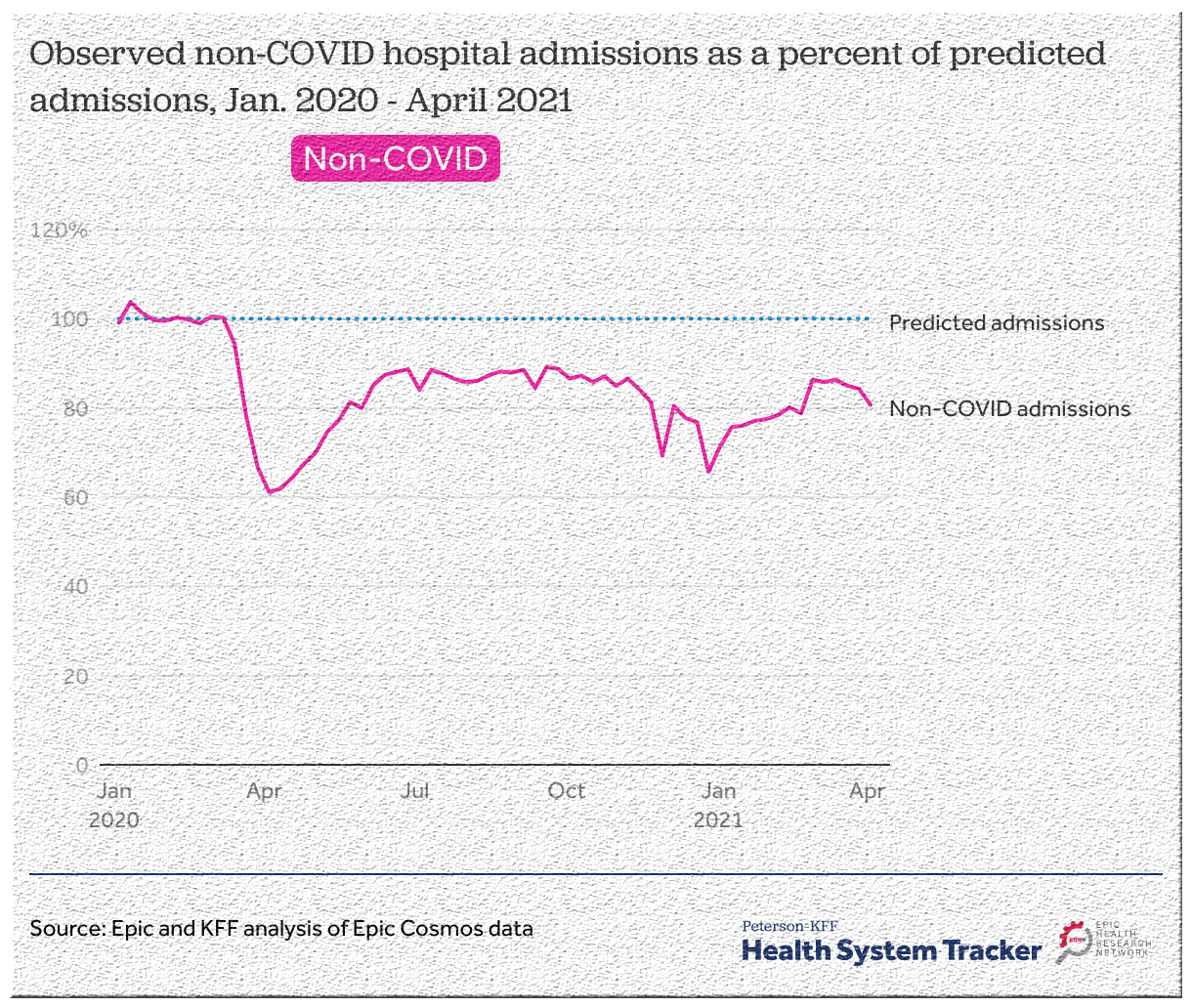
This deferred service demand should begin to consistently flow into the system in the fourth quarter of this year and 2022, as the pandemic is managed down with the rate of the vaccinated population with at least one dose inching up to 70%, from the present 62%.
A further boost to spending will also come from a healthcare technology upgrade cycle, which has slowed down over the past 18 months, as the focus and resources have been on managing the pandemic.
All this creates a rich pool of opportunities in healthcare.
Biotechs Building Up Steam
Biotechnology, which is the largest healthcare industry group by company count, has been a study in contrast when it comes to investment performance. While the largest of the biotechs have powered the Nasdaq Biotechnology Index (IBB) to a year-to-date gain of 13%, towards the end of last month, the broader S&P Biotechnology Index (XBI) was down 6% for the year. The Prudent Biotech portfolio was up 86% over the same period.
The largest biotech companies that have done well are the COVID-19 vaccine and treatment-related companies, like Moderna, BioNTech, and Regeneron, as their earnings potential has soared. But a majority of biotech companies have not participated in the broader market rally. This seems contradictory in an environment of low rates and a risk-seeking investor mindset. However, the muted performance thus far is going to change as outlined in the Biotech Second Half Outlook. Since then, acquisition activity has picked up as Eli Lilly (LLY), Amgen (AMGN), Sanofi (SNY), and Pfizer (PFE) have acquired biotech companies. Due to the lagging performance, biotechs now are a relatively undervalued industry group in the market at a time when the healthcare sector has become a top-performing group. Once biotechs join the rally, it will contribute towards further gains in healthcare.
Medical Devices, Systems, and Services
The Medical Devices, Medical Systems, and Medical Services are industry groups that have done well this year. They will benefit further from the secular growth and the pent-up demand, which has been uneven thus far due to the Delta variant. Deeper digitization of the healthcare industry will continue to favor healthcare technology and services companies.
Regulatory Environment
The rising regulatory interest in healthcare affordability and managing healthcare costs, including drug pricing, has remained an overarching concern for many years. There is also a push towards allowing the CMS to negotiate prices for the most expensive drugs in its formulary. While the pandemic has shifted attention thus far away from further regulation, healthcare costs will continue to draw more scrutiny as the pandemic becomes less of a threat. Bills have been proposed in Congress, even before the pandemic, taking aim at drug pricing and negotiating power. Although the industry is going to fight tooth-and-nail in Congress and the courts, pharmaceuticals will not be able to walk away as it remains the number one public interest issue. The risk is real but not new, and investors will have to learn to negotiate it and understand which pockets can be affected the most based on evolving legislation.
Outlook
Healthcare has come a long way this year to become one of the leading market sectors. Earlier this year, we had anticipated a cyclical rise in healthcare spending during the second half as the pandemic abated. However, the new Delta variant appears to have briefly slowed down the return of such spending.
Each wave of the rolling pandemic spurs vaccination, leaving a smaller pool of vulnerable population for the next wave, and thus diminishing the economic impact.
In the 2021 outlook, we had projected a 15% return for the S&P Healthcare Index, but now believe we can witness a 20% to 25% rise in 2021, particularly as we expect biotechs to perform better in the final months and any concern about economic growth draws investors towards healthcare. A defensive sector with spending momentum is an ideal combination and an attractive place to be for investing opportunities.
We continue to maintain that healthcare exposure can be quite rewarding and investors should maintain a portfolio allocation. The 10-stock Prudent Healthcare model portfolio is up 97% for the year with a mix of Biotechs, Medical Devices, Services, and Managed Healthcare companies. There is a significant pool of promising healthcare companies. A few such companies, some of which may be now or in the past be part of our model portfolios, include InMode (INMD), Natera (NTRA), Cutera (CUTR), ShockWave Medical (SWAV), Myriad Genetics (MYGN), Organogenesis (ORGO), STAAR Surgical (STAA), Option Care Health (OPCH), Progyny (PGNY), Intellia Therapeutics, OptimizeRx (OPRX), Vocera (VCRA), Beam Therapeutics (BEAM), Editas (EDIT), Moderna (MRNA), The Joint Corp (JYNT), TransMedics (TMDX), and BioLife Solutions (BLFS).
